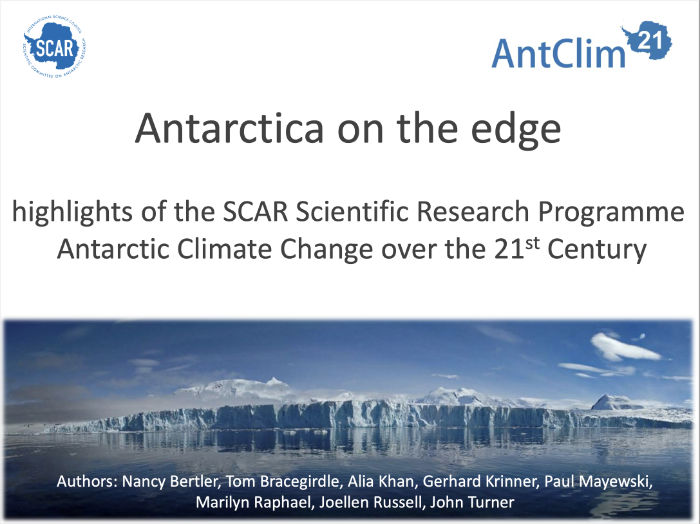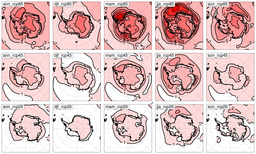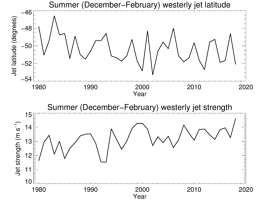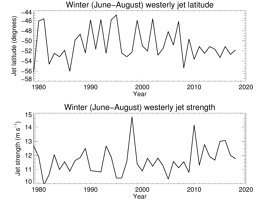SCAR focuses its science efforts on high priority topical areas through its Scientific Research Programmes (SRPs). Details of former SRPs can be found through the links below.

Former Research Programmes
Details of the process for establishing this suite of SRPs in 2012 can be found on the archived SCAR website.
The First Scientific Research Programmes
Scientific Research Programmes were initiated following SCAR’s restructuring in 2004. The first programmes were:
- Antarctic Climate Evolution (ACE) (ended 2012)
- Antarctica and the Global Climate System (AGCS) (ended 2012)
- Evolution and Biodiversity in the Antarctic (EBA) (ended 2013)
- Interhemispheric Conjugacy Effects in Solar-Terrestrial and Aeronomy Research (ICESTAR) (ended 2010)
- Subglacial Antarctic Lake Environments (SALE) (ended 2010)
Limited information on this first generation of SRPs can be found on the Science page of the archived SCAR website or in the SRP Presentation.
Programme 2010-2018
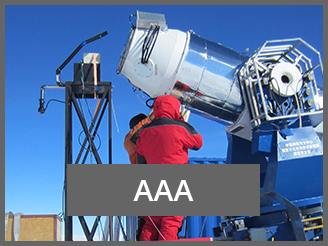 Astronomy and Astrophysics from Antarctica – AAA
Astronomy and Astrophysics from Antarctica – AAA
This was a Scientific Research Programme until 2018, when it became an Expert Group directly under the Executive Committe. It aims to coordinate astronomical activities in Antarctica in a way that ensures the best possible outcomes from international investment in Antarctic astronomy, and maximizes the opportunities for productive interaction with other disciplines.
Details of the process for establishing this suite of SRPs in 2012 can be found on the archived SCAR website.

AntClim21

Antarctic Climate Change over the 21st Century (AntClim21) focused on the critical issue of estimating how the Antarctic climate system may change over the 21st century. The main scientific goal was to improve climate model projections of Antarctic climate at the end of the 21st century.
AntClim21 Final Report
A comprehensive overview of AntClim21’s aims and achievements is provided in this summary presentation ‘Antarctica on the Edge’.
Summary Video
A short video on the aims and achievements of the AntClim21 SRP, presented during the SCAR 2020 Online conference.
Key Achievements and Legacy
Science
- Linking modern observations with past reconstructions is key to quantifying and understanding natural climate variability and assessing the emergence of anthropogenic influences. AntClim21 workshops and collaborations provided insights into the potential for future climate surprises.
 The #GreatAntarcticClimateHack was a pioneering hybrid meeting held both online and in person. It was aimed at discussing and deciding on metrics to contribute to the evaluation and improvement of climate models that form part of the scientific basis of IPCC reports. A key novelty was the cross-disciplinary approach to model evaluation. This research fed into the current IPCC AR6 report and also involved a strong link with the Southern Ocean Carbon and Climate Observations and Modeling (SOCCOM) project.
The #GreatAntarcticClimateHack was a pioneering hybrid meeting held both online and in person. It was aimed at discussing and deciding on metrics to contribute to the evaluation and improvement of climate models that form part of the scientific basis of IPCC reports. A key novelty was the cross-disciplinary approach to model evaluation. This research fed into the current IPCC AR6 report and also involved a strong link with the Southern Ocean Carbon and Climate Observations and Modeling (SOCCOM) project.- New methods were developed that provide more reliable regional 21st century projections of Antarctic climate change. These were used to extract information from the climate model datasets that underpin science evidence for the IPCC process. Projections were produced of variables including temperature (terrestrial and sea surface), precipitation, and winds.
Stakeholder Focus
AntClim21 papers provided, or contributed to, the following results that have been included as part of the scientific evidence in the IPCC AR6 WG1 report (see summary report ‘Antarctica on the Edge’ for more information and full references):
- Showed that the representation of southern mid-latitude westerlies is improved in the current generation of climate models (Bracegirdle et al., 2020a);
- Outlined further improvements and remaining challenges in the representation of sea ice and the Southern Ocean (Beadling et al., 2020; Roach et al., 2020);
- Provided an updated assessment of climate projections (Bracegirdle et al., 2020b) and collaborated on updated sea-level projections through ISMIP6 (Nowicki et al., 2020; Payne et al., 2021).
Capacity Building
AntClim21 workshops and activities included a major element of capacity building. For example the #GreatAntarcticClimateHack included researchers from 17 countries and a high proportion of early-career scientists (29 from 92). Approximately half of all attendees joined remotely, which provided an opportunity for wide engagement.
Supporting Early-Career Researchers (ECRs) was an integral part of AntClim21. Types of support included Steering Committee (SC) membership, travel grants for conference and workshop attendance, networking events, and presentation prizes.
A Vibrant International Community
During the lifetime of AntClim21, a vibrant international community of Antarctic scientists was developed. This was achieved through workshops, conference sessions and networking events. Support for Early-Career Researchers and participants from emerging Antarctic nations helped to increase diversity of the community.
Reports and Documents
AntClim21 reports to SCAR Delegates and Executive Committee meetings can be found through the SCAR Meeting Papers folder.
Other documents can be found in the AntClim21 folder of the SCAR Library.
AntEco

AntEco aimed to increase the scientific knowledge of biodiversity, from genes to ecosystems that, coupled with increased knowledge of species biology, can be used for the conservation and management of Antarctic ecosystems.
AntEco Final Report

Key Legacies
The majority of AntEco’s efforts concentrated on bringing people together, with over 90 researchers funded to attend conferences and workshops (>50% of which were early-career researchers or from developing Antarctic nations).
Read ECR Testimonials from the Polar2018 Open Science Conference.
Policy-relevant work included several new significant contributions to the Antarctic Environments Portal on important topics:
- marine plastics,
- marine biodiversity,
- pathways for the introduction of terrestrial non-native species,
- non-native microbial introductions,
- specially protected and managed areas in Antarctica, and
- the status of known non-native species introductions and impacts.
and the SO-AntEco expedition to the South Orkney Island Marine Protected Area.
Notable achievements include leading contributions to The Monaco Assessment, The Biogeographic Atlas of the Southern Ocean, reports to CCAMLR, education activities and contributions to popular media such as BBC wildlife series ‘Blue Planet 2‘, ‘Seven Worlds, One Planet‘ and ‘Frozen Planet 2‘.
AntEco Activities
AntEco played a leading role in 26 conference sessions and organised or funded 20 international workshops. Face-to-face outreach to over 50,000 people at public outreach events. Joint workshops, publications, conference sessions and activities with other SCAR SRPs and groups, including AntClim21 SRP (Antarctic Climate Change in the 21st Century), AnT-ERA SRP (Antarctic Thresholds – Ecosystem Resilience and Adaptation), PAIS SRP (Past Antarctic Ice Sheet Dynamics), Plastic in Polar Environments, EG-ABI (Antarctic Biodiversity Informatics), EG-BAMM (Birds and Marine Mammals), ANTOS (Antarctic Near-shore and Terrestrial Observing System) and BEPSII (Biogeochemical Exchange Processes at the Sea-Ice Interfaces), and international programmes MEASO (Marine Ecosystem Assessment for the Southern Ocean), ICED (Integrating Climate and Ecosystem Dynamics), SOOS (Southern Ocean Observing System) and Biodiversity.aq.
See a selection of AntEco activities.
Key Papers
Publications in peer-reviewed journals formed the primary deliverable of the programme with an extensive list of publications (over 200 articles, reports and book chapters) including the SCAR Biogeographic Atlas of the Southern Ocean.
See the list of key papers published during the AntEco programme.
Key Members
View members of the leadership team and steering group.
Reports and Documents
AntEco reports to SCAR Delegates and Executive Committee meetings can be found through the SCAR Meeting Papers folder.
Other documents can be found in the AntEco folder of the SCAR Library.
AnT-ERA

The main goal of AnT-ERA was to facilitate the science of primarily, climate-change-induced, biological processes, from the molecular to the ecosystem level, in Antarctic and Sub-Antarctic marine, freshwater and terrestrial ecosystems.
For details see the Implementation Plan, which includes the list of SC members.
This includes details on achievements, activities, key papers, funding balance and other products.
Summary Video
A short video on the aims and achievements of the AnT-ERA SRP, presented during the SCAR 2020 Online conference.
Key Achievements and Legacy
AnT-ERA initiated and supported scientific communication, training and brain storming among scientists of all stages of career, representing a high diversity of topics and nationality.
The final AnT-ERA synthesis workshop, held in Coimbra in 2019, on Biological Processes in Antarctic Ecosystems, aimed to assemble and structure the main scientific findings within the scope of AnT-ERA of the past decade. It resulted in a publication in Biological Reviews, written not only for scientists but also for decision makers and other stakeholders.
A highlight in training the young generation of biologists on Antarctic and Southern Ocean ecology was the spring course on Biological Processes in Antarctic Ecosystems in Buenos Aires (Argentina), 24 -28 September 2018, in which forty-four graduate, PhD students and post-docs from ten countries participated. More information can be found in the Spring Course summaries document.
Main brain storming events were the cross-programme workshop on Interactions between Biological and Environmental Processes held 16-18 September 2015 in Barcelona (Spain), and the outlook workshop held 2-3 October 2014 in Napoli (Italy) on Molecular and genetic advances to understanding evolution and biodiversity in the polar regions, which linked the previous SRP EBA (Evolution and Biodiversity in the Antarctic) and AnT-ERA.
A post-expedition workshop (Polarstern 81) was organized by AnT-ERA and held 8 -12 September 2014 in Dijon, France, which resulted in a special volume of Polar Biology.
Linking Science and Stakeholders
AnT-ERA contributed its own actions and products to a broad variety of initiatives, linking scientific knowledge and science management, the public and policy:
- 1st Antarctic Horizon Scan;
- Antarctic Climate Change and the Environment (ACCE) report and yearly updates to the ATCM;
- Intergovernmental Science-Policy Platform on Biodiversity and Ecosystem Services (IPBES), the United Nations Framework Convention on Climate Change (UNFCCC) conferences in Paris and Marrakech;
- Commission for the Conservation of Antarctic Marine Living Resources (CCAMLR);
- Antarctic Environments Portal (AEP);
- Polar Educators International (PEI);
- Marine Ecosystem Assessment for the Southern Ocean (MEASO);
- 2017-2022 SCAR Strategic Plan.
Reports and Documents
AnT-ERA’s reports to SCAR Delegates and Executive Committee meetings can be found through the SCAR Meeting Papers folder.
Other documents can be found in the AnT-ERA folder of the SCAR Library.
EBA

Describe the past, understand the present, predict the future
Evolution and Biodiversity in the Antarctic: The Response of Life to Change (EBA) was an international, multidisciplinary, SCAR Scientific Research Programme under Life Sciences which ran from 2006 to 2013. It combined the research communities and aims of earlier SCAR programmes RiSCC (Regional Sensitivity to Climate Change in Antarctic Terrestrial Ecosystems), EVOLANTA (Evolutionary Biology of Antarctic Organisms) and EASIZ (Ecology of the Antarctic Sea Ice Zone). EBA also incorporated the work of active SCAR groups such as the Census of Antarctic Marine Life (CAML), the Southern Ocean Continuous Plankton Recorder Survey (SO-CPR), SCAR-MarBIN, the Expert Group on Birds and Marine Mammals, and SCAR services like the Antarctic Biodiversity Database. All of these contributed in one way or another to EBA.
EBA sought to:
- Understand the evolution and diversity of life in the Antarctic;
- Determine how these have influenced the properties and dynamics of present Antarctic ecosystems and the Southern Ocean system;
- Make predictions on how organisms and communities are responding and will respond to current and future environmental change; and
- Identify EBA science outcomes that are relevant to conservation policy and communicate this science via the SCAR Antarctic Treaty System Committee.
The EBA team also worked closely with one if its sister SRPs, Antarctica and the Global Climate System (AGCS), to produce the 2009 landmark publication, the Antarctic Climate Change and the Environment (ACCE) Report.
EBA also provided biological information of interest and use to Treaty Parties, which was fed into Treaty meetings and the activities of the Committee on Environmental Protection (CEP) and the Commission on the Conservation of Antarctic Marine Living Resources (CCAMLR).
Leadership
The Co-Chief Officers of EBA were Guido di Prisco (Italy) and Peter Convey (UK).
They were supported by Co-Secretaries José Xavier (Portugal) and Meghana Rajanahally (New Zealand), and Steering Committee members Angelika Brandt (Germany), Marc Lebouvier (France), Kathy Conlan (Canada), Michael Stoddart (CAML/Australia), Dana Bergstrom (Australia) and Louise Newman (APECS/Switzerland).
Work Packages
EBA’s key areas of marine, terrestrial and freshwater research were addressed through five Work Packages, each with defined sub-themes:
Work Package 1: Evolutionary history of Antarctic organisms
Leaders: Brigitte Ebbe (Germany), Katrin Linse (UK) and Dominic Hodgson (UK)
- Vicariance and Radiations: When did the key radiations of Antarctic taxa take place?
- Impact of glaciation on land (habitat modification/loss and timing and extent of isolation), and at sea (evolutionary links between continental shelf and slope or deep-sea species);
- Phylogeography: geographical structure and relationships in the Antarctic biome;
- Evolutionary history of Antarctic micro-organisms (both prokaryotic and eukaryotic).
Work Package 2: Evolutionary adaptation to the Antarctic environment
Leader: Takeshi Naganuma (Japan)
- Limits to organism performance: adaptation to the Antarctic environment constraining physiological performance;
- Physiological and genomic adaptations that allow organisms to survive in the Antarctic: the extent to which these are special to the Antarctic or simply variants of more general adaptations exhibited by organisms elsewhere;
- Ability of Antarctic organisms to cope with daily, seasonal and longer-term environmental changes;
- Behavioural and morpho-functional adaptations;
- Adaptation and plasticity (genotype and phenotype).
Work Package 3: Patterns of gene flow and consequences for population dynamics: Isolation as a driving force
Leaders: Elie Poulin (Chile) and Ian Hogg (New Zealand)
- Population structure and dynamics in the context of evolutionary biology;
- Natural and anthropogenic dispersal processes: immigration and emigration of organisms; intra-Antarctic dispersal; the role of advective/transport processes in gene flow and population structure;
- Genetic structure of populations: differences among and between Antarctic and non-Antarctic populations;
- The extent to which populations of Antarctic organisms exist as metapopulations.
Work Package 4: Patterns and diversity of organisms, ecosystems and habitats in the Antarctic, and controlling processes
Leaders: Lúcia de Siqueira Campos (Brazil) and Satoshi Imura (Japan)
- Spatial and temporal variations in diversity: variation of diversity at different spatial scales within the Antarctic and within defined time frames;
- Response to latitudinal and environmental gradients: local, regional and global;
- Radiations: history of key evolutionary radiations in the Antarctic;
- Unknown areas: patterns of diversity and biotic composition of unexplored but important areas (e.g. deep sea, inland nunataks, subglacial lakes).
Work Package 5: Impact of past, current and predicted future environmental change on biodiversity and ecosystem function
Leaders: Julian Gutt (Germany) and David Renault (France)
- Interactions between introduced and indigenous species in selected environments under climate change;
- Effect of abiotic change on biota;
- Modelling interactions between environmental change and organism responses in order to predict biotic change;
- Impact of biological feedback on climate.
Publications
For a list of EBA publications, including some from predecessor programmes, see the EBA complete publications list.
For EBA Newsletters, see the Newsletters folder.
Data
EBA submitted data to the Antarctic Master Directory, now known as the Antarctic Metadata Directory (AMD). Other EBA-related databases are:
Contributing Projects
For a list of projects which contributed to the EBA programme, see the list of supporting projects.
PAIS

The overarching objective of the Past Antarctic Ice Sheet dynamics (PAIS) Scientific Research Programme was to provide geological and ice core evidence of Antarctic Ice Sheet response to a broad range of past climatic and oceanic conditions. That evidence is used to constrain paleo-simulations of regional Antarctic climate, ice sheet dynamics and sea-level models, as well as to improve the physics of climate and ice sheet models used in projections.
PAIS Final Report
Summary Video
A video on the aims and achievements of the PAIS SRP:
- Full length version (9:20 minutes)
- Short version (2:20 minutes)
Key Legacy
PAIS has progressed understanding of the complexity of Antarctic ice sheet sub-glacial, proximal and distal environments and of their response to past climate changes at different time scales. The results obtained improve our knowledge of Southern high-latitude polar amplification in the past. Polar amplification is projected to increase and the rate at which polar areas respond to ongoing and future climate change is yet to be determined, as highlighted by the 2019 IPCC Special Report on the Ocean and Cryosphere in a Changing Climate (SROCC).
Scientific Coordination
PAIS organized conferences and supported workshops during its term, to coordinate the scientific community to share ideas, integrate multi-disciplinary knowledge, produce a large amount of high-impact scientific publications, to submit innovative international scientific proposals, and facilitate large international research consortia (e.g. the International Ocean Discovery Program, IODP).
Training Schools
PAIS supported schools to train the next generation of researchers. Participants were given intensive training on deep sea drilling, seismic stratigraphy, and use of different proxies for reconstructing environmental changes. Information about the IODP-PAIS school in 2019 can be found in the IODP-PAIS Antarctic School Report. A second edition of the school is planned for the Summer of 2022.
Publication
PAIS edited a book “Antarctic Ice Sheet Evolution”, published in October 2021. The book is the product of a large PAIS-community effort, presenting a comprehensive synthesis of many papers, which represents the current knowledge of Past Antarctic Ice Sheet dynamics, the legacy from previous SCAR programmes, and the challenges for the future.
Next Research Programme
During its lifetime, PAIS evolved and became more transdisciplinary, working with solid Earth geodynamicists, oceanographers, climate scientists and modellers. This led to the development of a white paper that reflected a convergence of scientific interest across SCAR’s science groups on improving the understanding of Antarctica’s dynamic ice sheet contribution to global sea-level rise, which in turn led to the development of the multi-disciplinary new SCAR INSTANT Scientific Research Programme. The former PAIS website is now a legacy section on INSTANT’s website.
Outstanding Research Questions
A large conference was organized in 2017 in Trieste (Italy) to discuss the state of the art. Details can be found on the PAIS legacy page of the INSTANT website.
During this conference a bottom-up white paper was written listing outstanding research questions still to be addressed.
Read the PAIS Strategic White Paper on Future Research Directions.
PAIS Activities
PAIS has delivered a significant amount of products with respect to the implementation plan, under the coordination of the six PAIS subcommittees:
- Palaeoclimate Records from the Antarctic Margin and Southern Ocean (PRAMSO):
- Completion of International Ocean Discovery Program (IODP) Exp. 374 (Ross Sea), 379 (Amundsen Sea), 382 (Scotia Sea) and shallow drilling (Amundsen Sea).
- Publication from previous drilling campaigns (IODP Exp 318, SHALDRIL, ANDRILL-1 and 2 and CRP-1,2,3 and older) in high impact factor journals.
- Submission of new drilling proposals (e.g. Sabrina Coast, Weddell Sea, Antarctic Peninsula, Wilkes Land, Ekström Ice Shelf and Kamb Ice Stream).
- Paleotopographic-Palaeobathymetric reconstructions showing changes in bedrock elevations, landforms and configuration of Antarctica over the past ~100 million years, by seismic stratigraphic mapping and sediment restoration models. The elevation change in subglacial topography of various AIS sectors from sub-aerial to marine was caused by tectonic subsidence, increasing ice sheet volume and load, and prolonged and repeated ice bed excavation, since the onset of widespread glaciations.
- Sub-glacial geophysical reconstructions of ice bedrock roughness and sub-glacial drainage networks, from land to the coast to the shelf margin relied on:
- Airborne radio-echo sounding surveys like AGAP, Rosetta-ice, ICECAP.
- Over snow geophysical surveys (e.g. Whillans subglacial lake and Kamb Ice Stream grounding zone; Thwaites Glacier).
- Ice flux modelling. iv) Multibeam surveys over the continental shelf, revealing LGM and previous subglacial and sub-ice shelf features.
- Integrating ice and marine sediment cores from:
- ultra-high resolution and expanded Holocene sediment and ice stratigraphy;
- cross-linkage of multiple datasets of Pleistocene sediment and ice core records to reconstruct regional versus local climate forcings, processes and environmental changes.
- Recent Ice Sheet extent reconstructions since the LGM, by integrating numerical models constrained by a large range of observations. The latter include data on past grounding-line positions and dynamics from ice proximal and offshore geophysical surveys and marine sediment cores, and on past ice-sheet thickness changes from exposure-age dating on land and constraints from ice and lake sediment cores (e.g. The RAISED Consortium, 2014).
- Deep-Time Ice Sheet reconstructions since the onset of glaciations by integrating numerical models with the observations providing indirect estimates of:
- ancient ice volume and sea-level histories;
- ice sheet sensitivity to astronomic, atmospheric CO2, temperature and oceanic forcings;
- glacial/interglacial ice sheet extent amplitude, frequency and dynamics;
- AIS sensitivity to far-field and near-field sea level changes, GIA and dynamic topography.
Outcomes of the all six PAIS subcommittees are publications on the Antarctic contribution to future global sea level changes based on ice sheet models calibrated to AIS reconstructions for the Pliocene, the last interglacial (LIG, 130 ka) or post-LGM deglaciation.
Data
PAIS has promoted publicly available data:
- the Antarctic Seismic Data Library System (SDLS) open-source database,
- the International Bathymetric Chart of the Southern Ocean (IBCSO),
- the ice thickness and subglacial topographic models Bedmap2 and Bedmap3,
- the International Ocean Discover Program (IODP) core repositories and national core repositories.
Information about new cruises, projects and publications was communicated and shared via SCAR and via the PAIS portal.
Key Papers
See the list of key papers published during the PAIS programme.
Key Members
View members of the PAIS leadership team and steering committee.
Reports and Documents
PAIS reports to SCAR Delegates and Executive Committee meetings can be found through the SCAR Meeting Papers folder.
Other documents can be found in the PAIS folder of the SCAR Library.
SERCE

The overarching objective of the Solid Earth Response and influence on Cryospheric Evolution (SERCE) scientific research programme was to advance understanding of the interactions between the solid earth and the cryosphere to better constrain ice mass balance, ice dynamics and sea level change in a warming world.
SERCE Final Report
Summary Video
A short video on the aims and achievements of the SERCE SRP will be coming soon.
Key Legacy
SERCE supported three training schools during its term, to train the next generation of researchers. Participants were given intensive training on Glacial Isostatic Adjustment (GIA) modeling and relevant processes, including ice mass change, solid-earth deformation, and sea-level and geoid variations.
Glacial Isostatic Adjustment Training School, 13-19 September 2015
The first training school was held at the Ohio State University Stone Laboratory, Gibraltar Island (Lake Erie), Ohio, USA. From nearly 150 submissions, 45 participants from 16 countries were selected and invited; participants included 25 PhD students, 4 Postdocs and 12 Researchers/Faculty. Real time virtual participation was made available throughout the school and 31 ‘virtual participants’ from 8 additional countries took part and were able to ask questions in real time.
The recorded lectures are still available on the training school website.
Glacial Seismology Training School, 11-17 June 2017
The second training school was held in Fort Collins, Colorado, USA, and 44 students from 15 countries attended. The programme focused on developing understanding of the ice-bed interface, basal hydrology and iceberg calving using seismic methods.
Instructors’ presentations are still available in PDF format on the training school website.
Glacial Isostatic Adjustment (GIA) Training School, 26-30 August 2019
The third training school was held at Lantmäteriet, Gävle, Sweden and 41 participants (predominantly PhD students and postdocs) and 16 lecturers took part, from 28 countries (6 continents). All lectures were broadcast online in real-time, with over 60 ‘virtual participants’ listening at any one time and over 500 individual views of the online content.
The recorded lectures are still available on the training school website.
Formation of the Geothermal Heat Flow (GHF) sub-group
In 2018, SERCE formed a sub-group to support international, collaborative research across multiple fields (including geology, geophysics, glaciology, and ice sheet modelling). In 2020, the group produced a White Paper on Antarctic geothermal heat flow research detailing current methods, looking at their challenges and limitations, and recommending key future directions.
Read the GHF White Paper, published as SCAR Bulletin 202.
Watch lead author Alex Burton-Johnson’s video explaining what geothermal heat flow is, how it’s being measured and why continued research on the topic is important for Antarctica.
Outstanding Research Questions
Three SERCE workshops came up with outstanding research questions still to be addressed: the 2017 GIA workshop in Reykjavik, the 2018 TACtical workshop in Hobart, and the 2019 GIA workshop in Ottawa.
Read the outstanding research questions.
- Data acquisition statements.
- Table of activities carried out by the SERCE programme.
- Key papers published during the SERCE programme.
- Leadership team and steering committee.
Reports and Documents
SERCE reports to SCAR Delegates and Executive Committee meetings can be found through the SCAR Meeting Papers folder.
Other documents can be found in the SERCE folder of the SCAR Library.

